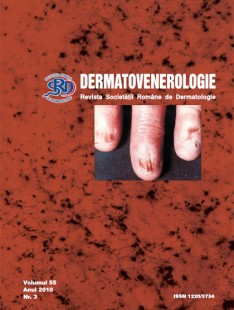Referate generale
Actualitati in ceea ce priveste interventia stresului oxidativ in patogeneza dermatitei atopice
Dermatita atopica este o afectiune cutanata rezultata in urma interactiunii a numerosi factori genetici, imunologici, biochimici, de mediu etc., caracterizata printro functie de bariera cutanata deficitara. La pacientii cu dermatita atopica au fost descrise numeroase modificari imunologice si non-imunologice si in prezent sunt numeroase teorii in ceea ce priveste etiopatogeneza acestei frecvente afectiuni cutanate in rândul grupului pediatric.
Boala se asociaza cu nivel seric crescut de IgE totale, precum si cu sensibilizare la o serie larga de alergeni de mediu si alimentari, deasemenea cu eozinofilie periferica.
Recent numeroase studii s-au indreptat spre a demonstra interventia stresului oxidativ (SO) in patogeneza dermatitei atopice. Este binecunoscut faptul ca speciile reactive ale oxigenului (SRO) implicate in stresul oxidativ, interactioneaza cu numeroase structuri, in special cu membranele celulare, lipide, proteine, acizi nucleici etc.
Studiile efectuate in aceasta directie, au evidentiat faptul ca stresul oxidativ joaca un rol principal in declansarea si intretinerea proceselor inflamatorii cronice de la nivelul leziunilor cutanate de dermatita atopica. Cercetatorii au incercat sa determine markerii de stres oxidativ atât la nivel cutanat cât si la nivel seric. Rezultatele studiilor au evidentiat interventia stresului oxidativ in patogeneza dermatitei atopice si au lansat ideea unei noi abordari terapeutice care sa scada nivelul de stres oxidativ , in special in cazurile de DA rezistente la tratamentul clasic.


